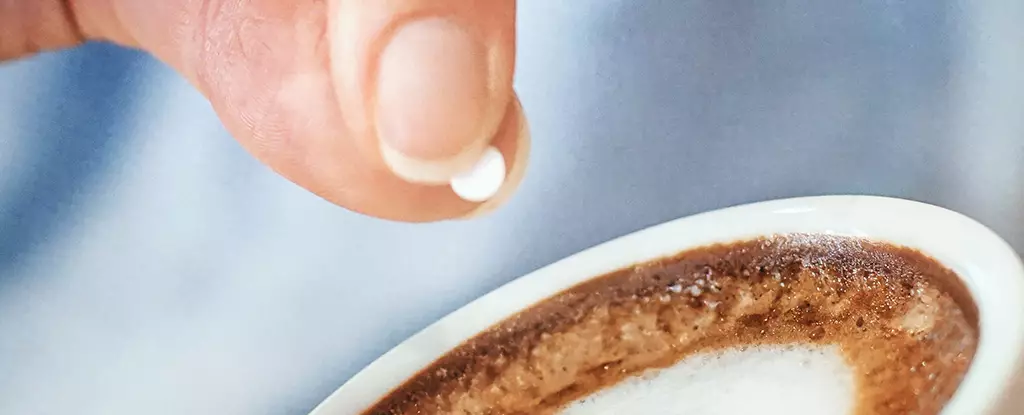Artificial sweeteners have long been subjects of controversy, sparking debates regarding their safety and overall health benefits. For decades, consumers have grappled with conflicting messages about the potential risks and rewards of these synthetic sugars. While many turn to these alternatives to reduce caloric intake and manage sweetness levels, their impact on human health remains a contentious topic. However, an emerging perspective on saccharin—one of the most well-known artificial sweeteners—not only questions its health implications but also reveals its potential role in the burgeoning crisis of antibiotic resistance.
Revolutionary Research from Brunel University
A groundbreaking study spearheaded by researchers from Brunel University in the UK has unveiled saccharin as a novel antimicrobial agent. Controlled experiments in a laboratory setting demonstrated that this common artificial sweetener possesses the remarkable ability to destabilize the structural integrity of various bacterial strains. Microbiologist Ronan McCarthy articulated the significance of their findings, stating that saccharin actively compromises the walls of pathogenic bacteria, leading to cellular distortion and eventual lysis, or bursting, of the bacteria.
This discovery holds monumental importance, especially in the fight against notoriously resilient bacteria like Staphylococcus aureus and Escherichia coli. Although the degree of saccharin’s efficacy fluctuated among different bacterial types, the allure of this sweetener as a potential antimicrobial is undeniable. It offers not just a safeguard against existing pathogens but acts synergistically with conventional antibiotics, allowing them to penetrate previously resistant bacteria. This dual action could pave the way for a revolutionary approach to antibiotic treatment anew.
From Sweetener to Surgical Solution
In a fascinating extension of their initial findings, researchers at Brunel University took their exploration further by developing a surgical dressing infused with saccharin. In laboratory tests conducted on pig skin, this innovative dressing showcased considerable advantages over traditional materials such as silver-infused bandages. The results demonstrated superior effectiveness in reducing bacterial colonies, which hints at potential applications in medical settings.
Saccharin, once merely regarded as a guilt-free indulgence, now stands as a promising candidate in tactical medical applications, possibly reducing the incidence of post-surgical infections. The implications of these findings are profound, suggesting that an ingredient long thought to be innocuous could become a powerful tool in the medical arsenal against antibiotic-resistant infections.
Understanding the Broader Implications of Antibiotic Resistance
The threat of antibiotic resistance looms larger each year, urgently demanding innovative solutions. The statistics are staggering—resistant bacterial infections account for millions of deaths annually, critically undermining advances in modern medicine. As bacteria evolve, our established pharmaceutical solutions begin to falter, necessitating an immediate and proactive approach to preserve the effectiveness of antibiotics.
The introduction of saccharin as an adjunct in treating resistant infections could greatly aid in curtailing this alarming trend. McCarthy emphasized this urgency when he highlighted our need for new therapeutic strategies. Unlike traditional antibiotics that require decades of research and exorbitant financial investments for development, saccharin stands out as a readily accessible option, positioned to revolutionize our approach to combating superbugs.
The Need for a Comprehensive Evaluation
While the early results are undeniably promising, caution is warranted. Saccharin’s unpredictable side effects warrant further investigation, particularly concerning its broader effects on gut microbiota and metabolic health. The complexity of human biology—the interplay of various artificial substances and their multifaceted impacts—requires a careful and deliberate approach before saccharin can be embraced as a mainstream solution in medical practice.
Moreover, researchers will need to transition from laboratory settings to human clinical trials to truly ascertain saccharin’s effectiveness and safety as part of antibiotic treatments. Although this artificial sweetener may be on the verge of entering a new realm in the fight against infectious diseases, it is critical to prioritize rigorous scientific inquiry to fully understand both its benefits and potential risks.
In sum, the revelations regarding saccharin provide not merely an alternative sweetener; they open new pathways in the dogged battle against an escalating public health crisis. Its potential reinterpretation as an antimicrobial agent deserves our attention, propelling discussions forward about innovative strategies to combat antibiotic resistance.

